Best Places to Visit in Italy (2025):Top Destinations & Hidden Gems

by Mary | Last Updated September 5, 2025

Planning your dream trip and wondering about the best places to visit in Italy in 2025? From world-famous landmarks to quiet countryside villages, Italy is a destination that truly has it all. Whether it’s your first time exploring the country or a return visit, this guide combines Italy’s must-see destinations with inspiring hidden gems in Italy to help you plan the perfect journey.
Imagine standing in front of the great Colosseum in Rome, gliding through the canals of Venice, or tasting wine in the stunning rolling hills of Tuscany. Picture yourself driving the Amalfi Coast, hiking between the colorful villages of the Cinque Terre, or exploring timeless treasures like Matera and Sicily.
This all-in-one resource blends iconic highlights, off-the-beaten-path experiences, and practical tips to help you create an Italy itinerary that fits your style — whether you have 10 days, two weeks, or more.
Italy’s Must-See Destinations
For first-time visitors, Italy’s classics never disappoint. These are the must-see destinations in Italy — the cities and regions that showcase the country’s history, art, landscapes, and lifestyle at its very best.
From the ancient ruins of Rome to the Renaissance treasures of Florence, the magical canals of Venice, and the breathtaking coastal roads of the Amalfi Coast, these are the places that belong on every Italian itinerary.
Whether you’re sipping wine in Tuscany, hiking between the colorful villages of the Cinque Terre, or admiring Milan’s Duomo, these destinations capture the essence of Italy. Each offers its own unique flavor — and together, they create the perfect introduction to one of the most beautiful countries in the world.
Map of The Best Places to Visit in Italy
How to Use This Map
You can zoom in and out with your mouse or fingers to explore the details. Click on the icons to see more information about each destination included in our Best Places in Italy guide. Use the arrow in the top left corner to open the index of all locations. To keep it handy, click the star next to the map’s title and save it to your Google Maps account. Later, just open Google Maps on your phone or computer, go to “Your Places” → “Maps,” and you’ll find it ready to guide your trip. For a larger view or a printable version, simply click “View larger map” in the top right corner.
Rome – The Most Visited City in Italy
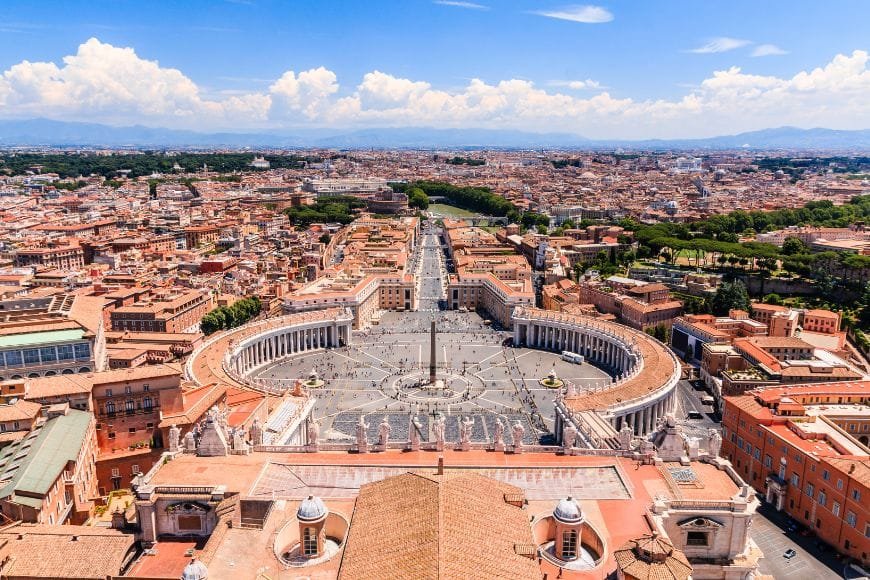
Rome is the most visited city in Italy, attracting millions of travelers every year with its blend of ancient history, Renaissance art, and modern Italian life. Known as the Eternal City, it’s a place where every corner tells a story — from Roman emperors and gladiators to Renaissance popes and modern-day Italians enjoying their daily espresso.
No trip is complete without seeing the Colosseum, where you can step inside the world’s most famous amphitheater, or the Roman Forum, once the beating heart of the empire. The Vatican City — home to the Vatican Museums, St. Peter’s Basilica, and the Sistine Chapel — is another must, with treasures that could take days to explore.
But Rome isn’t only about grand monuments. Wander through Trastevere, a colorful neighborhood filled with cobbled streets, trattorias, and lively piazzas. Pause at the Trevi Fountain to toss a coin (legend says it guarantees your return to Rome) and climb the Spanish Steps for sweeping city views.
👉 Travel tip: While Rome is well-connected by metro and bus, its historic center is best explored on foot. If you’re driving, keep in mind that much of central Rome falls under ZTL zones (restricted traffic areas).
To avoid fines, check our full Italy ZTL Zones Driving Guide before hitting the road.
How long to stay? Most first-time visitors spend 3–4 days in Rome, which gives you enough time to see the highlights without rushing. If you have more time, you can add day trips to Ostia Antica (ancient ruins by the sea) or the gardens of Tivoli.
Rome is a city of layers — history, culture, food, and everyday life blend seamlessly. Whether you’re here for a quick stop or a deep dive, it’s an unmissable destination on any Italy itinerary.
Venice – Italy’s Most Unique City
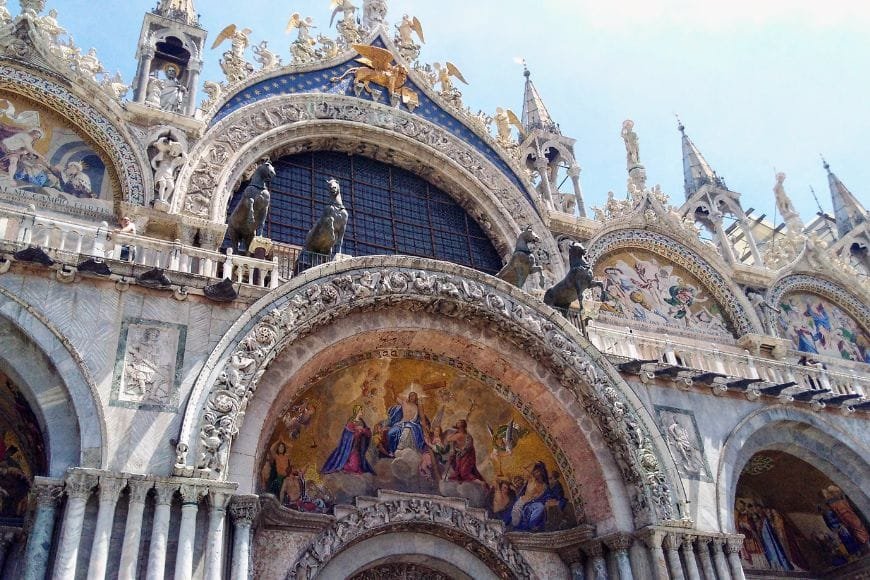
Venice is unlike anywhere else in the world — a city built on water, where canals replace streets and boats stand in for cars. Known as the City of Canals, it’s one of the most beautiful cities in Italy and a must-visit for first-timers.
Start at Piazza San Marco, the city’s main square, where you’ll find St. Mark’s Basilica with its dazzling mosaics and the Doge’s Palace, once the center of Venetian power. Don’t miss crossing the Bridge of Sighs, which once connected the palace to the prison — a reminder of Venice’s layered history.
Of course, no visit is complete without a gondola ride. Yes, it’s touristy, but gliding silently through narrow canals at sunset really does feel magical. On my first gondola ride, I remember how the city seemed to slow down — the lapping water, the pastel reflections on the walls, the gondolier’s voice carrying through the air. It was one of those travel moments that stays with you forever.
👉 Travel tip: Venice can be very crowded and expensive, especially in summer. To enjoy it at its best, visit in the shoulder seasons (April–May or September–October), and explore beyond the main sights. Neighborhoods like Cannaregio and Dorsoduro are quieter, with charming canals, artisan shops, and cozy bacari (wine bars).
👉 Day trips from Venice: If you have more time, take a vaporetto (water bus) to the islands of Murano (famous for glassmaking) and Burano (with its rainbow-colored houses).
How long to stay? Ideally, plan 2–3 days. That’s enough to see the highlights, enjoy a gondola ride, and still wander the quieter backstreets that make Venice unforgettable.
Florence & Tuscany – Renaissance Art and Rolling Hills
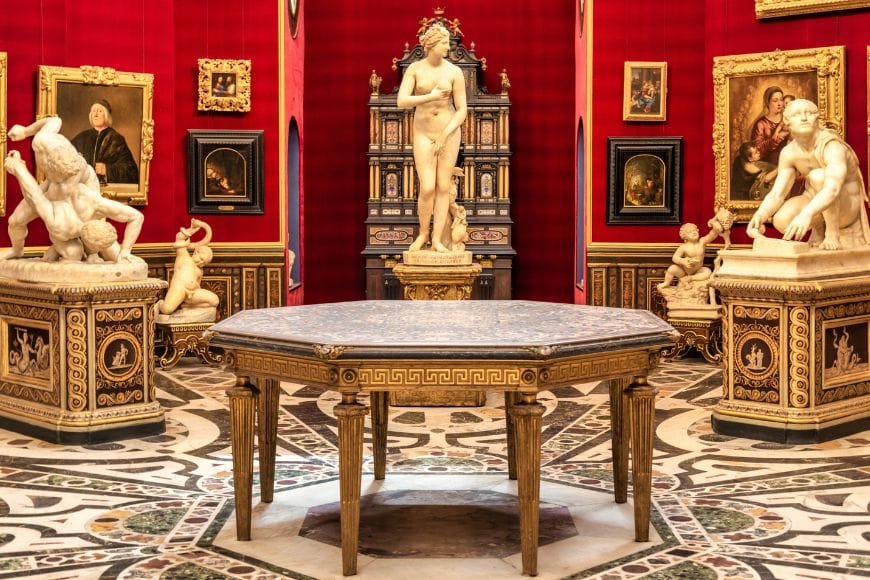
If Rome is Italy’s heart and Venice its soul, then Florence is its artistic spirit. Known as the birthplace of the Renaissance, Florence is home to masterpieces that shaped the world.
Step into the Uffizi Gallery to see works by Botticelli and Michelangelo, or climb the Duomo for sweeping views over terracotta rooftops. The Ponte Vecchio, with its glittering gold shops, is another symbol of the city’s enduring charm.
But Florence is also a gateway to Tuscany, one of Italy’s most beautiful regions. Just outside the city, the landscape opens up into rolling hills, dotted with olive groves, vineyards, and medieval hilltop towns. Driving through Tuscany feels like stepping into a painting — cypress-lined roads winding past stone farmhouses and endless vineyards. On my first drive from Florence to San Gimignano, I stopped at a small winery, where the owner poured me a glass of Chianti Classico straight from the barrel. It was one of those unplanned moments that made the Tuscany road trip unforgettable.
👉 Travel tip: Florence itself deserves at least 2–3 days to soak up its art, churches, and food. Add 3–4 days if you want to explore Tuscany by car — perfect for visiting towns like Siena, Montepulciano, and San Gimignano. For a slower pace, base yourself in a countryside villa or agriturismo (farm stay), and enjoy long meals of pasta, wine, and olive oil tastings.
👉 Don’t miss: Watching the sunset from Piazzale Michelangelo in Florence, and driving the famous Strada Chiantigiana (SR222) wine route through Chianti.
How long to stay? Plan 5–7 days if you want to balance Florence’s cultural treasures with the Tuscan countryside.
Get our FREE Italy
Travel Guide
E-Book
This printable guide is your ultimate companion for exploring Italy, with insider tips, detailed itineraries, transportation advice, must-see attractions, and more.
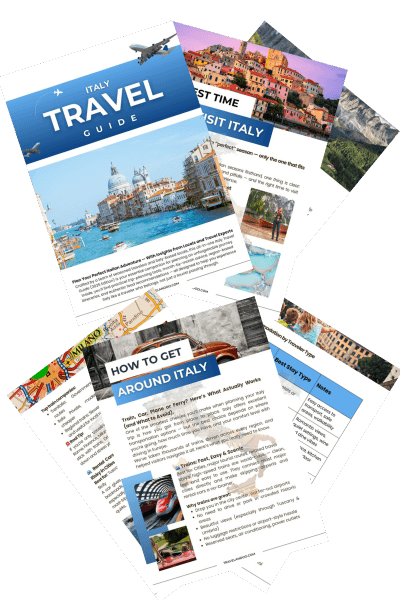
Amalfi Coast – Italy’s Famous Coastal Drive
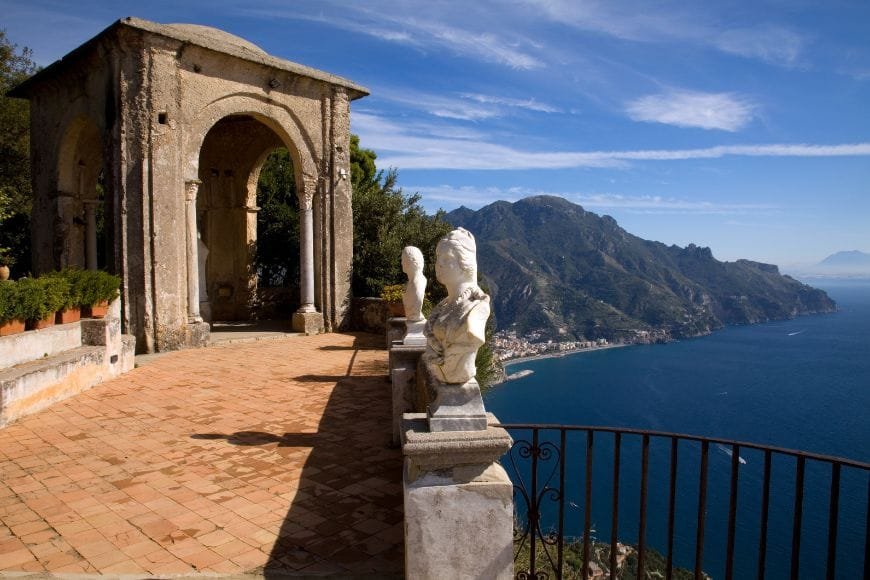
The Amalfi Coast is one of the most beautiful places in Italy and a dream destination. Stretching along southern Italy’s rugged shoreline, it’s famous for its dramatic cliffs, pastel-colored villages, and winding coastal roads that hug the turquoise sea. Driving here feels like a scene from a movie — every curve reveals another postcard-perfect view.
The star of the coast is Positano, with its steep lanes, cascading houses, and chic boutiques. Amalfi itself offers a charming cathedral and a lively piazza, while Ravello, perched high above the sea, is known for its peaceful gardens at Villa Cimbrone and Villa Rufolo. Each town has its own personality, making the trip a series of delightful discoveries.
On my first trip, I remember stopping at a viewpoint near Praiano just as the sun was setting. The cliffs glowed pink, the sea shimmered, and locals were gathering for an evening passeggiata. It was one of those rare travel moments where time seemed to stop.
👉 Travel tip: The Amalfi Coast is absolutely stunning but requires some planning due to its popularity and geography. The clifftop towns are connected by scenic but narrow coastal roads, and summer crowds can make getting around challenging.
The local SITA buses offer a relaxed way to travel between villages with incredible views, while ferries provide a beautiful perspective from the water and skip traffic entirely. For maximum flexibility exploring hidden coves and smaller towns, renting a car works well, especially during the shoulder seasons — May–June or September–October — when roads are less congested.
👉 Day trips from the Amalfi Coast: Take a boat to Capri for its famous Blue Grotto, or visit Sorrento for lemon groves and limoncello.
How long to stay? Plan at least 3–4 days to enjoy multiple towns without rushing. Many travelers combine the Amalfi Coast trip with Naples (for pizza and archaeology) or Pompeii for an unforgettable journey through southern Italy.
Planning to drive the Amalfi Coast? Check out our comprehensive Amalfi Coast road trip guide for insider driving routes and must-see stops.
Cinque Terre – Colorful Villages by the Sea
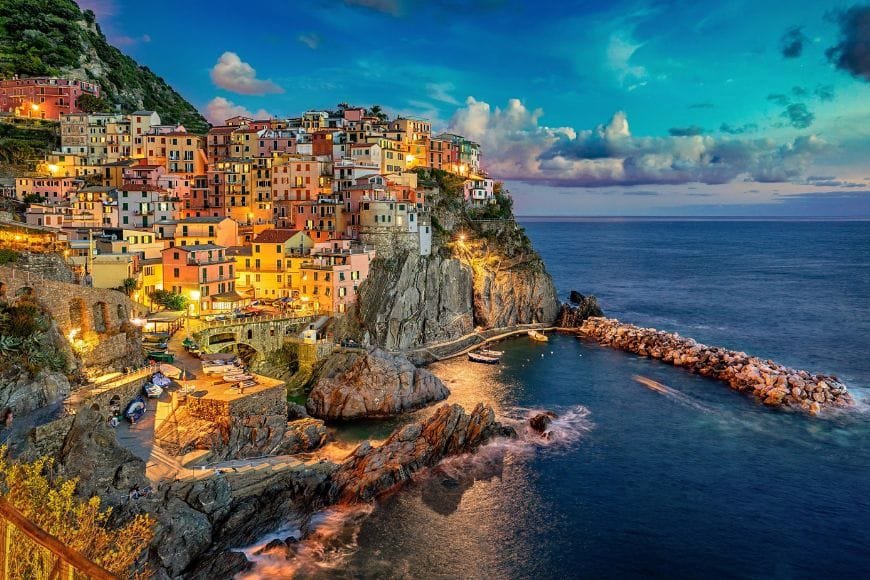
The Cinque Terre — meaning “Five Lands” — is one of the most beautiful coastal destinations in Italy. Nestled along the Ligurian Riviera, these five fishing villages (Monterosso, Vernazza, Corniglia, Manarola, and Riomaggiore) are famous for their pastel-colored houses clinging to cliffs above the turquoise sea. Each village has its own charm, connected by scenic hiking trails and local trains that run along the coast.
Vernazza is often considered the most picturesque, with its tiny harbor and medieval tower. Manarola is a photographer’s dream, especially at sunset when the houses glow orange and pink. Monterosso offers the largest beach, while Corniglia sits higher up, giving it a quieter, more secluded feel.
On my first visit, I hiked the Sentiero Azzurro (Blue Trail) between Riomaggiore and Manarola, pausing at cliffside viewpoints where the sea seemed endless. It was challenging in parts, but the reward was stopping in a local trattoria for fresh pesto pasta — Liguria’s most famous dish — with the smell of the sea still in the air.
👉 Travel tip: The best way to visit is by train from La Spezia or by ferry between the villages. If you enjoy hiking, allow at least a day for the Blue Trail and shorter scenic paths.
👉 Best time to visit Cinque Terre: Spring (April–June) and early autumn (September–October) offer the best weather and manageable crowds. Summer brings intense heat and heavy tourism, while winter is peaceful, but some businesses close.
How long to stay? Plan 2–3 days to explore all five villages at a relaxed pace. If you only have one day, focus on Vernazza, Manarola, and Monterosso for a taste of the region.
Milan – Fashion, History, and Northern Charm
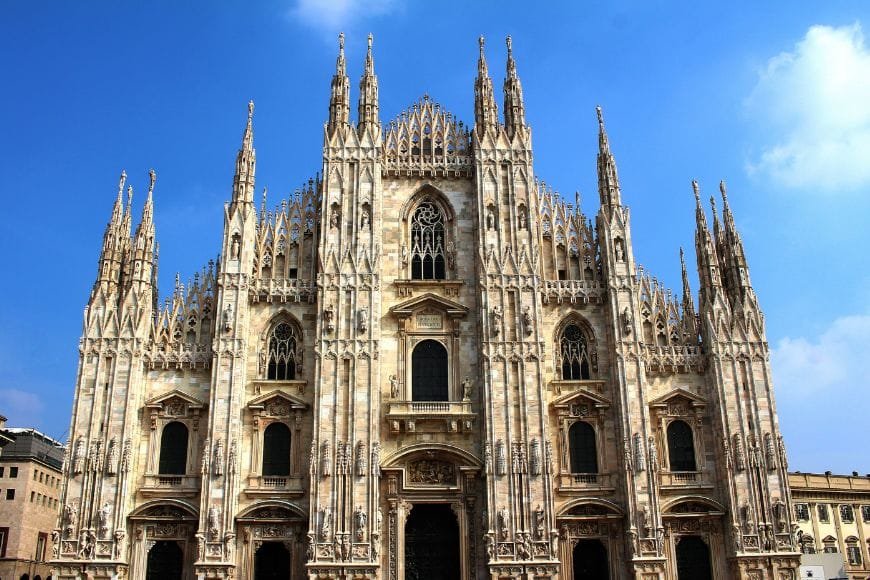
Often overlooked by first-time visitors, Milan deserves a spot among the best places to visit in Italy. As the country’s fashion and financial capital, it has a cosmopolitan vibe, yet it’s also home to some of Italy’s greatest cultural treasures.
The centerpiece is the Duomo di Milano, a Gothic masterpiece that took around six centuries to complete. Climb to the rooftop for breathtaking views across the city — on clear days, you can even spot the Alps in the distance. Close by, the Galleria Vittorio Emanuele II, one of the world’s oldest shopping malls, dazzles with its glass dome and designer boutiques.
Art lovers shouldn’t miss Leonardo da Vinci’s Last Supper, housed in the convent of Basilica Di Santa Maria delle Grazie. Tickets sell out months in advance, so booking early is essential.
On my first visit, I remember walking through the Brera district, where cobblestone streets, art galleries, and cozy cafés create a slower pace that contrasts with Milan’s modern skyline. It felt like stepping into a different side of the city — refined yet intimate.
👉 Travel tip: Milan is also one of the best bases for day trips in Northern Italy. In less than an hour by train, you can be on the shores of Lake Como, exploring the alpine charm of Bellagio and Varenna. Other popular trips include Bergamo, with its medieval Città Alta, and Turin, known for its baroque architecture and chocolate.
How long to stay? 2–3 days in Milan is enough to see the highlights, enjoy the shopping, and take a day trip to the lakes.
Hidden Gems & Off-the-Beaten Path in Italy
Beyond the famous icons, Italy hides a treasure trove of underrated destinations and hidden gems that reward curious travelers. These are the places where you can escape the crowds, wander quiet streets, and experience authentic local life.
From ancient cave dwellings in Matera to the sun-kissed towns of Puglia, the rustic countryside of Umbria, and the alpine landscapes of the Dolomites, these gems reveal a different side of Italy.
If you’ve already visited the classics — or simply prefer a slower, more authentic journey — these off-the-beaten-path destinations deserve a spot on your Italy itinerary.
Matera – Italy’s Ancient Cave City
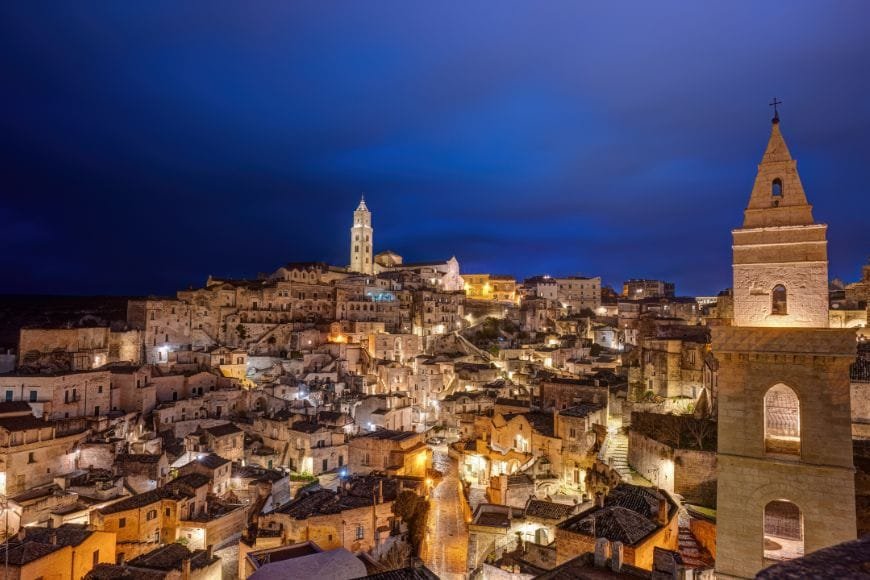
Few places in the world are as unique as Matera, a UNESCO World Heritage Site in southern Italy. Known for its Sassi cave dwellings, Matera is often called the “Stone City,” with homes, churches, and even restaurants carved directly into the rock. Walking through its labyrinth of alleys feels like stepping back in time — it’s no surprise that Matera has been used as a film set for movies like The Passion of the Christ and No Time to Die.
One of my favorite moments here was standing on a terrace at dusk, watching the cave houses slowly light up as the sky turned gold. The city looked like a living nativity scene — timeless, mysterious, and unforgettable.
👉 Travel tip: Matera is best explored on foot, so wear comfortable shoes and allow time to get lost in its winding lanes. Stay overnight if you can — many of the caves here have been transformed into boutique hotels, offering a magical experience.
👉 Don’t miss: The Casa Grotta di Vico Solitario (a preserved cave home), the Rupestrian Churches with their ancient frescoes, and the panoramic viewpoint from Piazzetta Pascoli.
How long to stay? A 1–2 day visit is perfect to explore the Sassi, enjoy local food, and soak in the atmosphere before continuing deeper into southern Italy.
Puglia – Whitewashed Towns & Coastal Beauty
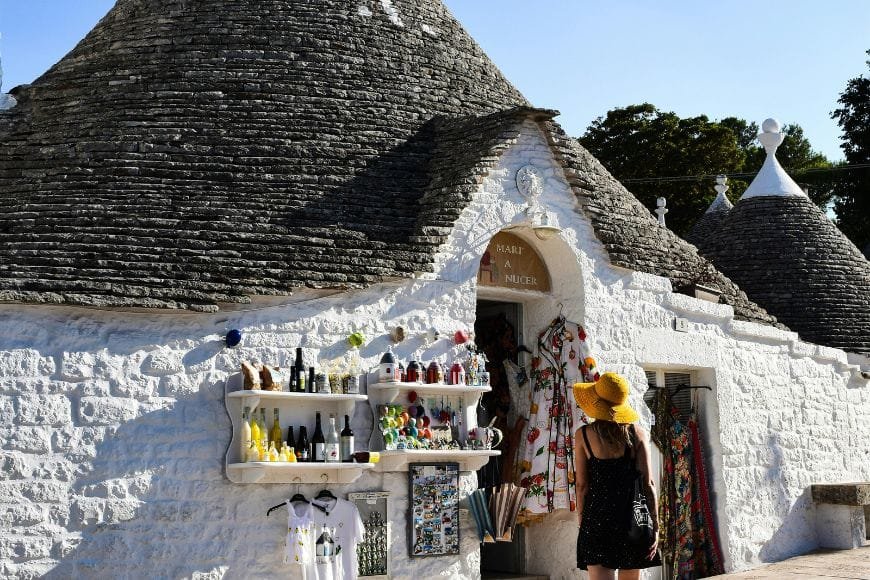
Located down in the heel of Italy’s boot, Puglia, a region that feels worlds away from the crowds of Rome and Florence. Known for its whitewashed hill towns, sun-drenched coastlines, and incredible food, it’s one of the best hidden gems in Italy for travelers who want authentic experiences without the tourist rush.
The star of the region is Alberobello, famous for its cone-roofed trulli houses, a UNESCO World Heritage Site. Strolling through its fairytale streets feels like stepping into another world. The coastal town of Polignano a Mare is another highlight — perched dramatically above the Adriatic Sea, it’s perfect for cliffside views and seafood feasts. Meanwhile, Ostuni, known as the “White City,” dazzles with its gleaming white buildings and maze of medieval alleys.
On my first trip to Puglia, I remember sitting in a family-run trattoria in Lecce, tasting orecchiette pasta with turnip greens — a dish as simple as it was unforgettable. It reminded me that food in Puglia isn’t about luxury, but about celebrating tradition and flavor.
👉 Travel tip: The best way to explore Puglia is by car. Public transport is limited, and driving gives you the freedom to wander through olive groves, coastal roads, and sleepy villages. Summer is hot but festive, while May–June and September–October are perfect for fewer crowds and mild weather.
👉 Don’t miss:
- Alberobello – UNESCO-listed trulli houses.
- Polignano a Mare – Stunning clifftop views and beaches.
- Ostuni – The White City.
- Lecce – Baroque architecture and hearty Pugliese cuisine.
How long to stay? Allow 4–5 days to explore the highlights at a relaxed pace, or longer if you want to combine Puglia with nearby Matera or Basilicata.
👉 Road-tripping through Puglia is a joy — check our Puglia Road Trip Itinerary for underrated routes.
Get our FREE Italy
Travel Guide
E-Book
This printable guide is your ultimate companion for exploring Italy, with insider tips, detailed itineraries, transportation advice, must-see attractions, and more.

Umbria – Rustic Countryside & Hill Towns
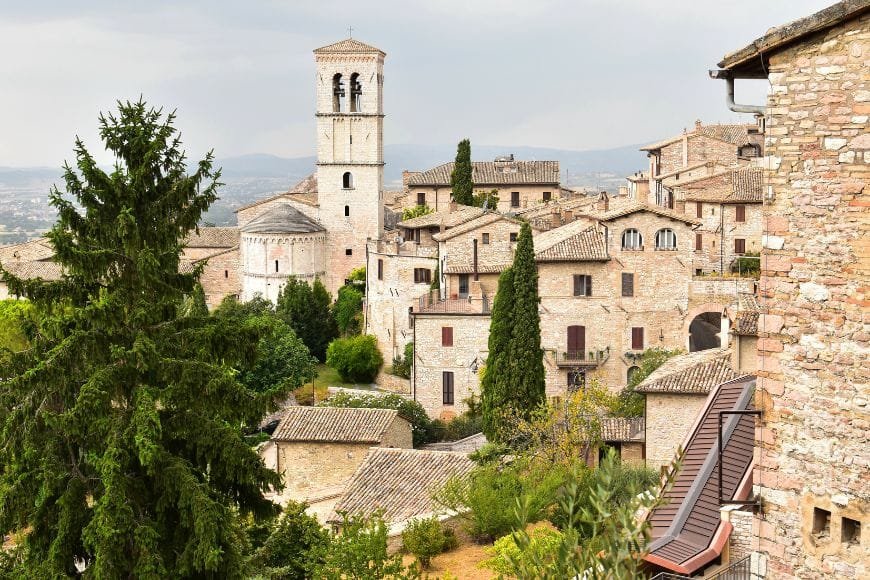
Often called the “green heart of Italy,” Umbria is a land of rolling hills, vineyards, and medieval villages that remain blissfully untouched by mass tourism. While nearby Tuscany steals much of the spotlight, Umbria offers a quieter, more authentic experience — making it one of the most rewarding hidden gems in Italy.
The region is dotted with enchanting hill towns. Assisi, is the birthplace of St. Francis, a spiritual and cultural treasure with its grand basilica and frescoes by Giotto. Perugia, Umbria’s capital, blends lively student life with history, famous for its Eurochocolate Festival and Renaissance palaces. Smaller towns like Spello, Orvieto, and Gubbio charm visitors with winding lanes, stone houses, and sweeping valley views.
On my first visit to Umbria, I stayed in a rustic agriturismo surrounded by olive groves. Every morning, the host served homemade bread with fresh olive oil, and every evening ended with local wine at sunset. It was slow travel at its finest — peaceful, simple, and unforgettable.
👉 Travel tip: Umbria is best explored by car, as many hill towns are not well-connected by train. Try visiting in spring (May–June) when the countryside is in bloom, or autumn (September–October) during the grape harvest and truffle season.
👉 Don’t miss:
- Assisi – UNESCO-listed basilica and spiritual heritage.
- Perugia – Renaissance beauty and chocolate festival.
- Orvieto – Dramatic cliffside Duomo and underground caves.
- Spello & Gubbio – Quiet, picturesque medieval towns.
How long to stay? Plan 3–4 days to explore the highlights, enjoy countryside drives, and relax in a villa or agriturismo.
Dolomites & Lake District – Alpine Beauty & Serene Lakes
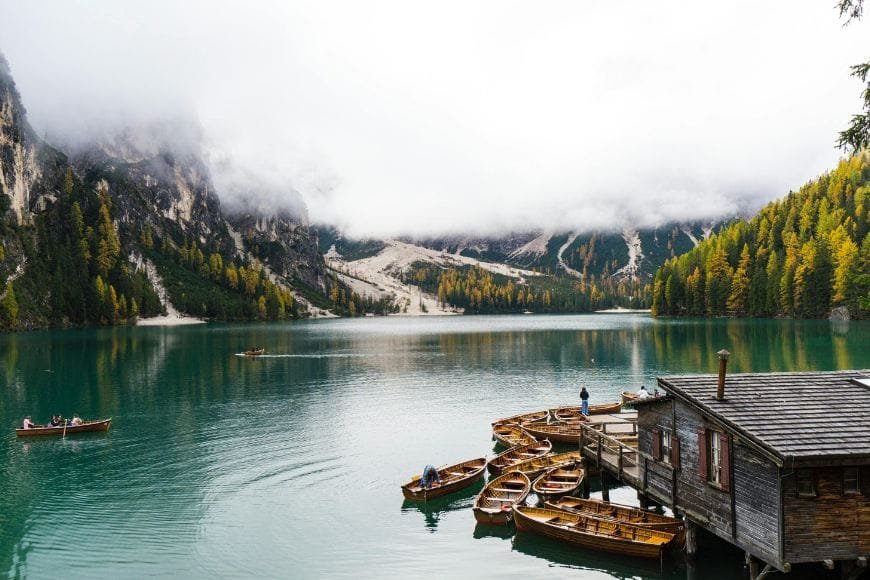
For a complete contrast to Italy’s cities and coastlines, head north to the Dolomites and the Lake District. Known for their dramatic peaks, turquoise lakes, and charming alpine villages, the Dolomites are among the most stunning landscapes in Europe and a true hidden gem in Italy for nature lovers.
In summer, the Dolomites are a paradise for hikers and cyclists. Trails like the Tre Cime di Lavaredo or the Seceda ridgeline offer breathtaking views of jagged peaks rising above flower-filled meadows. In winter, resorts like Cortina d’Ampezzo turn the region into a skiing and snowboarding haven. Meanwhile, crystal-clear lakes such as Lago di Braies and Lago di Carezza look like they were pulled straight from a postcard.
Not far away lies Italy’s famous Lake District, where glacial lakes are framed by mountains and elegant villas. Lake Como is the star, with picture-perfect towns like Bellagio and Varenna, while Lake Garda offers adventure sports, castles, and family-friendly resorts. Lake Maggiore is quieter, dotted with islands and lush gardens.
On my first visit to the Dolomites, I remember stopping at a roadside café near Lago di Misurina. Locals were sipping espresso while hikers with backpacks streamed by, and behind them rose the jagged peaks of the mountains. It was a perfect mix of Italian culture and Alpine adventure.
👉 Travel tip: A car is essential here for exploring both the Dolomites and the lakes. Visit in June–September for hiking, or December–March for skiing. For fewer crowds, aim for late spring or early autumn.
👉 Don’t miss:
- Dolomites: Tre Cime di Lavaredo, Seceda ridgeline, Lago di Braies.
- Lakes: Lake Como (Bellagio & Varenna), Lake Garda, Lake Maggiore.
- Cortina d’Ampezzo – great for both summer hikes and winter sports.
How long to stay? Allow at least 4–5 days — two to three for the Dolomites, and two more for the lakes. Many travelers combine this region with Venice or Milan for a perfect northern Italy itinerary.
Sicily – History, Food & Island Adventures
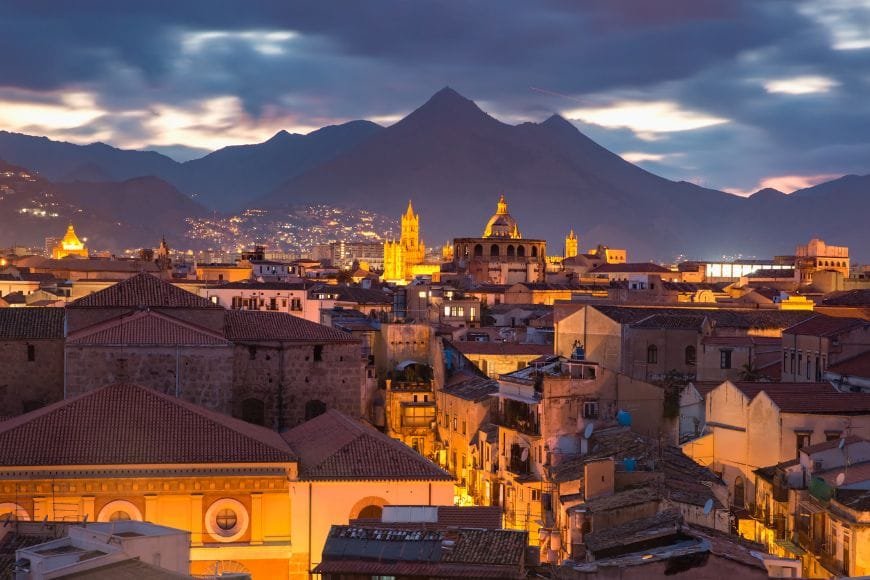
The largest island in the Mediterranean, Sicily, is a world of its own. Known for its mix of Greek temples, Arab-Norman architecture, baroque towns, and volcanic landscapes, it’s one of the most fascinating hidden gems in Italy — and yet, it remains surprisingly affordable compared to the mainland.
The island’s capital, Palermo, bursts with energy: chaotic markets like Ballarò and Vucciria offer a sensory overload of street food, spices, and fresh produce. Catania, on the eastern coast, sits in the shadow of Mount Etna, Europe’s most active volcano, where you can hike lava fields or take a guided jeep tour.
The Valley of the Temples in Agrigento is one of the best-preserved Greek archaeological sites outside of Greece, while towns like Taormina, Noto, and Ragusa showcase Sicily’s stunning baroque heritage.
On my first visit, I spent an evening in Ortigia, the historic heart of Syracuse. As the sun set over the sea, locals gathered for a passeggiata along the waterfront, children played in the piazza, and cafés filled with the smell of arancini and fresh cannoli. It felt like stepping into a slower, more authentic Italy — warm, welcoming, and unforgettable.
👉 Travel tip: Sicily is large, so don’t try to see it all in one trip. Focus on either the west (Palermo, Agrigento, Trapani) or the east (Catania, Taormina, Syracuse, Etna) to avoid spending too much time on the road. Renting a car is essential for exploring beyond the main cities.
👉 Don’t miss:
- Palermo – chaotic markets and Arab-Norman architecture.
- Mount Etna – hikes, jeep tours, and lava landscapes.
- Valley of the Temples (Agrigento) – UNESCO ancient ruins.
- Taormina – amphitheater with sea and volcano views.
- Syracuse & Ortigia – history and charm by the sea.
- Baroque towns – Noto, Modica, Ragusa.
- Food highlights – arancini, cannoli, granita, and seafood.
How long to stay? At least 5–7 days in Sicily for one side of the island. For a full loop, plan 10–14 days, combining ancient ruins, beaches, and authentic towns.
👉 Sicily is an island where renting a car makes all the difference. Our Sicily Road Trip Itinerary helps you uncover ancient ruins, coastal drives, and local food stops.
Best Time to Visit Italy
Italy is a country you can enjoy year-round, but the best time to visit Italy depends on what you want from your trip.
- Spring (April–June): One of the most popular seasons, with mild weather, blooming countryside, and fewer crowds than summer. Perfect for sightseeing in Rome, wine tours in Tuscany, or hiking in the Cinque Terre.
- Summer (July–August): Peak season for beaches like the Amalfi Coast and Sardinia, but expect high prices, hot temperatures, and big crowds in cities.
- Autumn (September–October): A favorite for many travelers — the grape harvest, food festivals, and cooler weather make it ideal for road trips through Umbria or the Dolomites.
- Winter (November–March): Great for budget travelers. Cities like Venice and Florence are quieter, while the Dolomites offer world-class skiing. Christmas markets and Carnevale add festive flair.
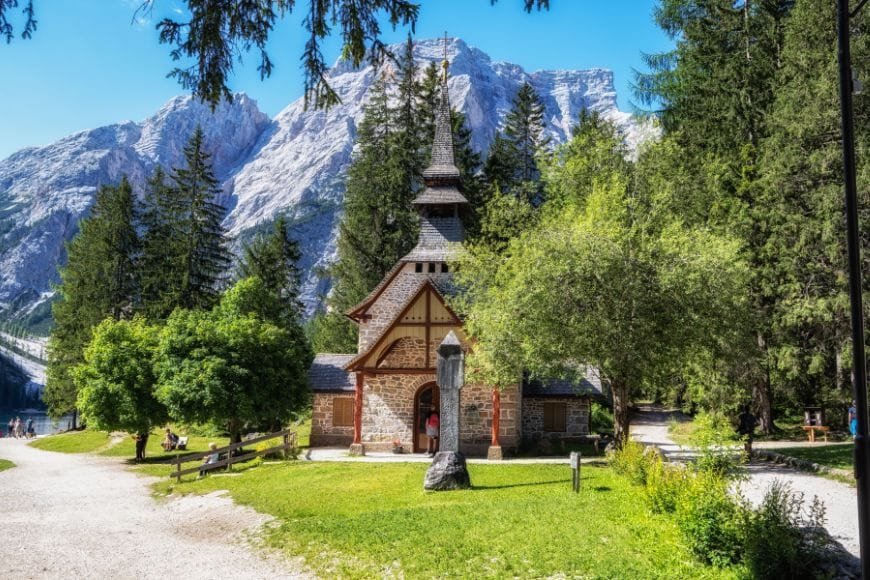
👉 Travel tip: The best month to visit Italy is usually May or September, when the weather is pleasant and crowds are manageable.
How to Get Around Italy
Italy has one of Europe’s best transport networks, and choosing how to travel depends on your itinerary.
- Trains: The high-speed rail system connects major cities like Rome, Florence, Venice, and Milan quickly and comfortably. Regional trains are slower but perfect for short hops.
- Car rental: The best option for exploring the Amalfi Coast, Tuscany, Umbria, Sicily, or the Dolomites, where trains don’t reach. Be aware of ZTL zones (restricted traffic areas) in cities to avoid fines.
- Flights: Useful for longer distances, especially if you’re visiting Sicily or Sardinia.
- Public transport & walking: Inside cities, metros, buses, and walking are the easiest ways to get around. In Venice, boats replace buses.
Suggested Itineraries for Italy
Not sure how long to spend in Italy? These Italy itineraries give you a starting point, whether you have a few days or several weeks.
- 10 Days in Italy Itinerary: Classic highlights — Rome, Florence & Tuscany, Venice, plus a taste of the coast with either the Cinque Terre or the Amalfi Coast.
- 2 Weeks in Italy Itinerary: Add more depth with Milan, the Lake District, and extra time in Tuscany or Umbria.
- 3 Weeks in Italy Itinerary: Perfect for slow travelers — includes all the highlights plus Matera, Puglia, Sicily, and the Dolomites.
- Weekend Trips in Italy: Ideal short escapes — a romantic weekend in Venice, a foodie getaway in Florence, or a coastal retreat on the Amalfi Coast.
👉 Travel tip: Mix famous cities with hidden gems in Italy for the perfect balance of culture, relaxation, and local flavor.
Insider Tips for Visiting Italy
Traveling through Italy becomes much easier when you know a few local secrets. One of the best ways to avoid crowds is by visiting popular landmarks early in the morning or during the shoulder seasons in spring and autumn. Cities like Rome and Florence can feel overwhelming in summer, but at quieter times they’re much more enjoyable.
Food is a huge part of Italian culture, and every region has its specialties. In Naples, try authentic pizza, while Bologna is known for pasta dishes like tagliatelle al ragù. In Sicily, don’t miss arancini and cannoli. Remember, Italians drink cappuccino only in the morning — order one after dinner and you’ll stand out as a tourist.
Cultural etiquette also matters. When visiting churches in Italy, dress modestly with shoulders and knees covered. Tipping is not obligatory, but rounding up the bill or leaving small change is appreciated. Greeting locals with a friendly “buongiorno” in the morning or “buonasera” in the evening goes a long way.
For budget-conscious travelers, Italy offers plenty of ways to save. Use regional trains instead of high-speed ones for short distances, take advantage of free museum days (like the first Sunday of the month), and enjoy an aperitivo, where the price of a drink includes a generous buffet of snacks.
👉 Travel tip: The best way to experience Italy is to slow down. Instead of rushing from one city to another, spend more time in fewer places, and you’ll discover authentic neighborhoods, hidden trattorias, and unforgettable local moments.
🧭 Related Italy Travel Guides
Planning your Italy adventure? These in-depth guides will help you plan smarter:
- The Ultimate Italy Travel Guide (2025 Edition) – Insider tips, itineraries, and everything you need to know.
- 10 Days in Italy Itinerary – Classic first-timer’s route through Rome, Florence, and Venice.
- Best Time to Visit Italy – Seasonal guide to avoid crowds and find the best weather.
- How to Avoid ZTL Zones in Italy – Essential for anyone visiting Italian cities by car.
- Bologna Food Tour – Discover the best food region in Italy and what to eat.
FAQs on The Best Places to Visit in Italy
What is the most visited city in Italy?
The most visited city in Italy is Rome, attracting millions each year with landmarks like the Colosseum, the Trevi Fountain, and Vatican City.
What is the best month to visit Italy?
The best month to visit Italy is usually May or September, when the weather is pleasant, prices are moderate, and crowds are smaller than in peak summer.
Which part of Italy is the most beautiful?
It depends on your travel style. The Amalfi Coast offers dramatic seaside cliffs, Tuscany has rolling hills and vineyards, the Dolomites boast alpine peaks, and Sicily combines beaches with ancient ruins.
How many days do you need to visit Italy?
For a first trip, plan at least 10 days in Italy to see highlights like Rome, Florence, and Venice, plus one coastal or countryside stop. A 2-week Italy itinerary allows more hidden gems.
Is it better to travel Italy by train or car?
Trains in Italy are best for city-to-city travel, while car rentals are ideal for exploring regions like Tuscany, the Dolomites, and the Amalfi Coast. Many travelers use a mix of both.
Final Words
Italy is more than a country — it’s a mosaic of history, landscapes, and flavors waiting to be explored. From Rome’s ancient wonders, the Renaissance art of Florence, and the romantic canals of Venice to the dramatic cliffs of the Amalfi Coast, the colorful Cinque Terre, and cosmopolitan Milan, the classics never lose their magic.
But the real beauty lies in discovering hidden gems in Italy like Matera’s cave dwellings, Puglia’s whitewashed towns, the rustic countryside of Umbria, the alpine peaks of the Dolomites, and the island escapes of Sicily and Sardinia. Together, they create endless possibilities for every traveler.
Whether you follow a classic 10-day Italy itinerary or embark on a longer Italy road trip, the best advice is to slow down and savor it. Because the true charm of Italy isn’t just in the landmarks — it’s in the espresso shared in a tiny piazza, the laughter at a family-run trattoria, and the hidden corners you discover when you least expect them.
👉 Use this guide as your starting point, but let curiosity lead the way. In Italy, every journey becomes a story you’ll carry for a lifetime.
Get our FREE Italy
Travel Guide
E-Book
This printable guide is your ultimate companion for exploring Italy, with insider tips, detailed itineraries, transportation advice, must-see attractions, and more.

💬 We’d love to hear from you!
Have questions, tips, or personal travel stories to share? Drop them in the comments below — your insights help fellow travelers plan their adventures too.



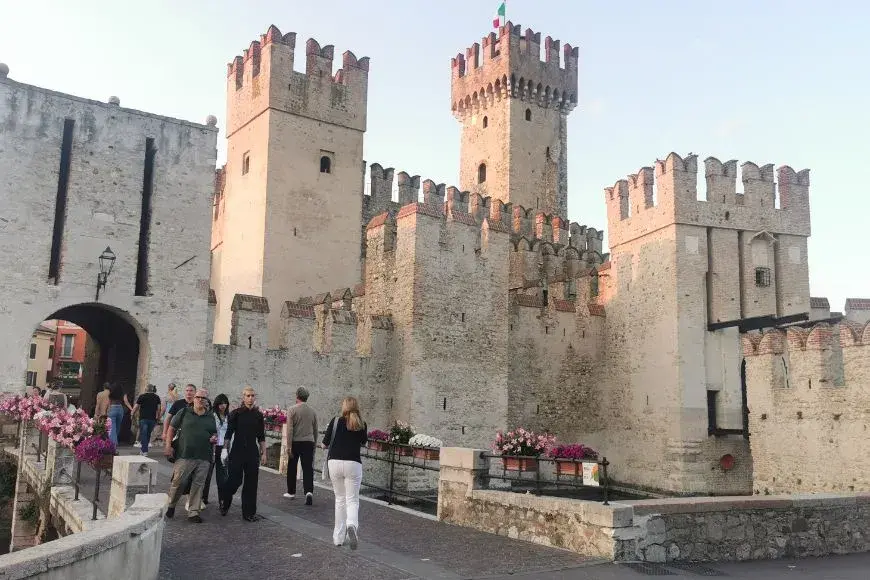
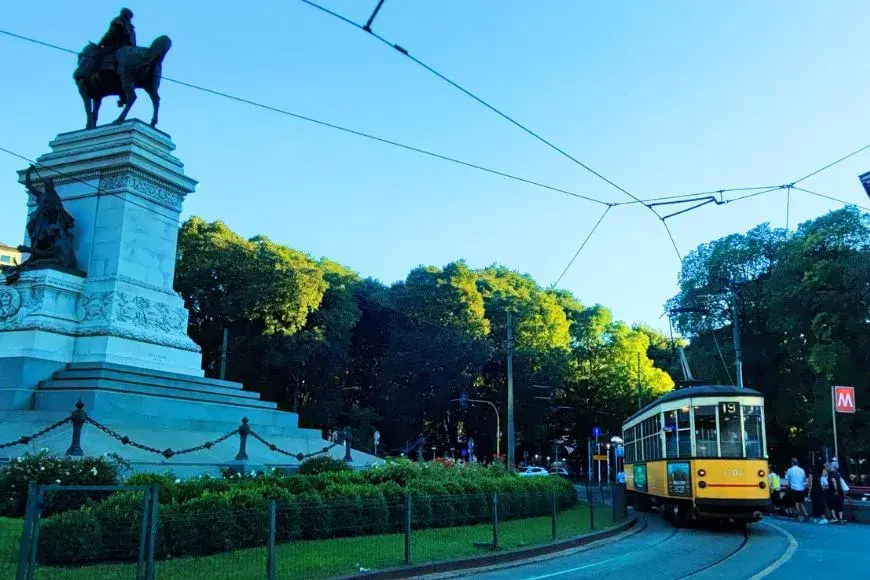
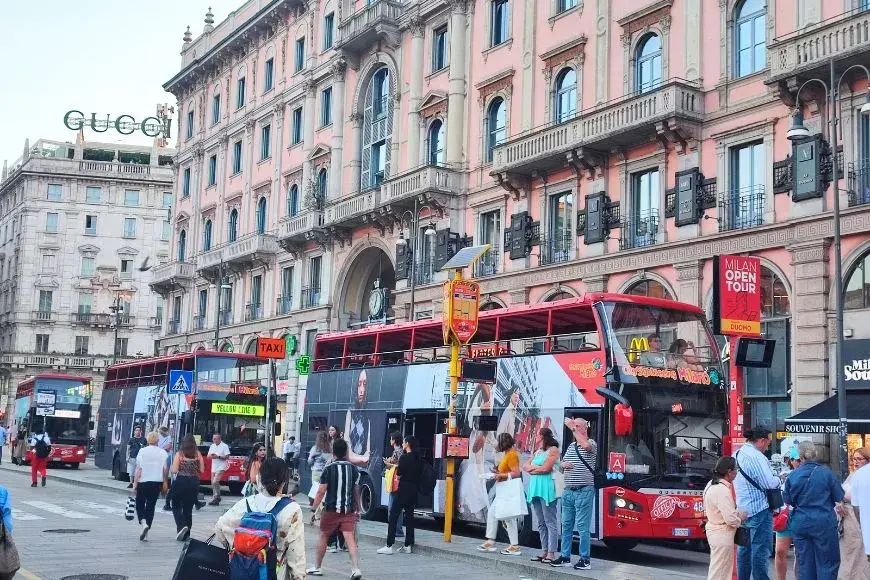
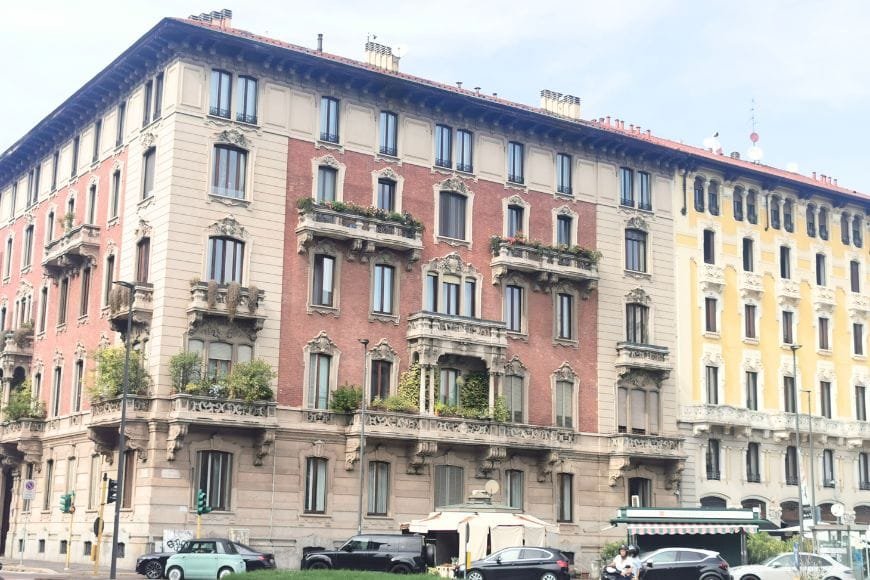

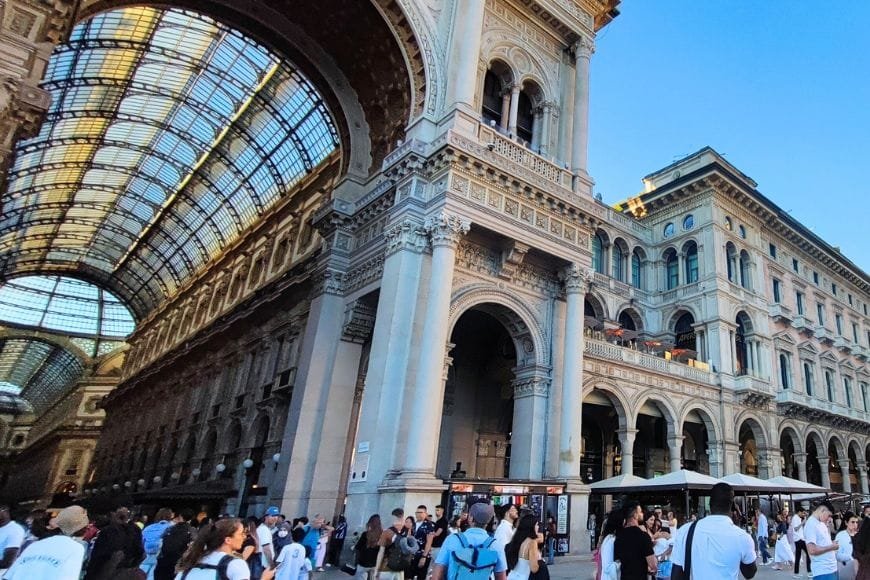
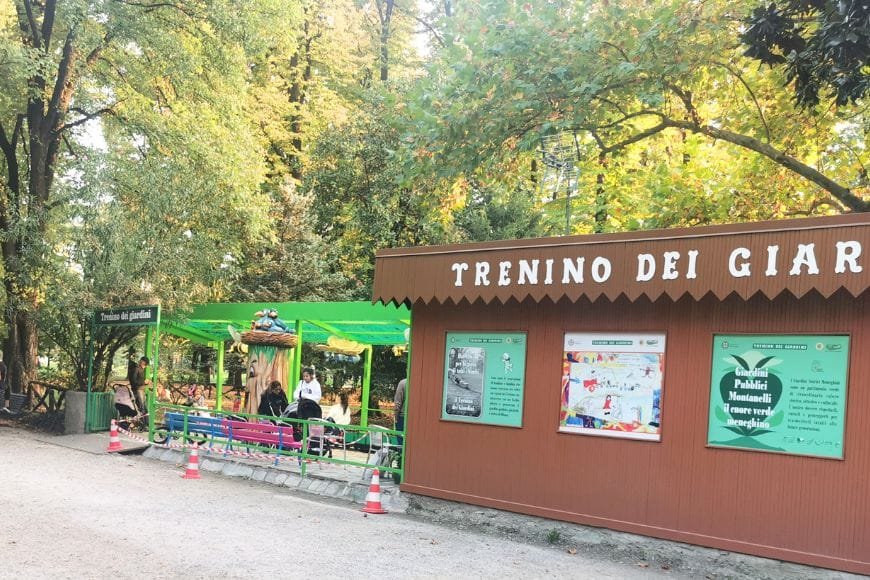
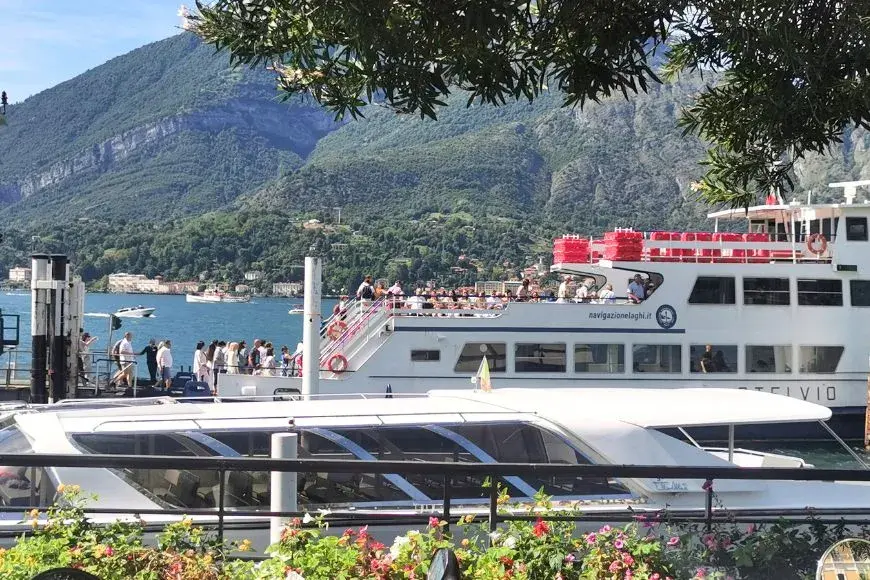
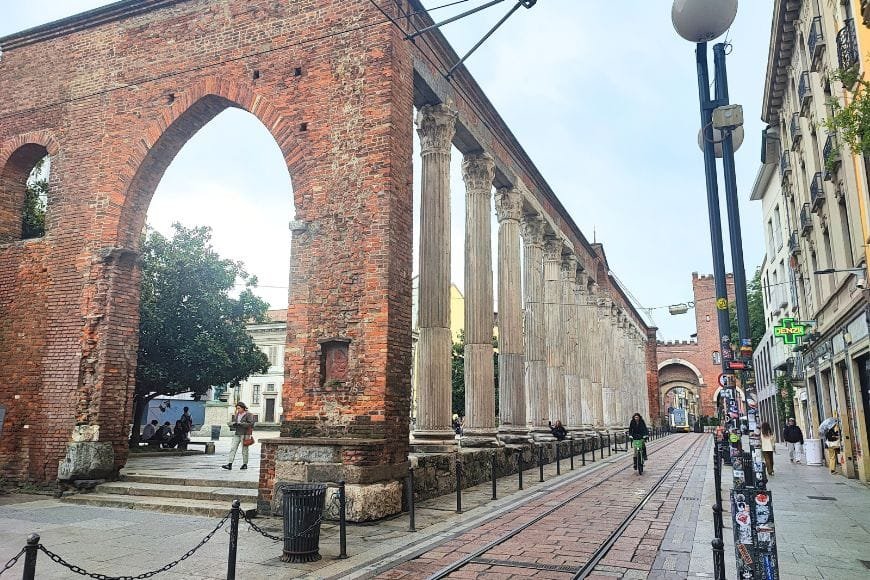
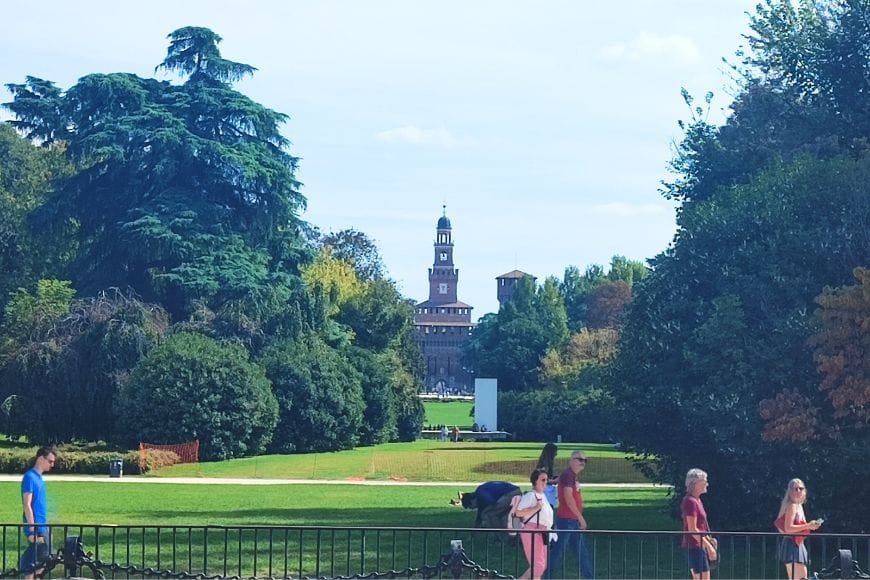

I’m so excited to be visiting Italy for the first time soon 🤗 Thanks so much for this wonderful blog post, Mary. It’s super helpful and inspiring! 👍
So glad to hear you’re visiting Italy soon🤗You’re going to love it!
Wishing you the best trip ahead